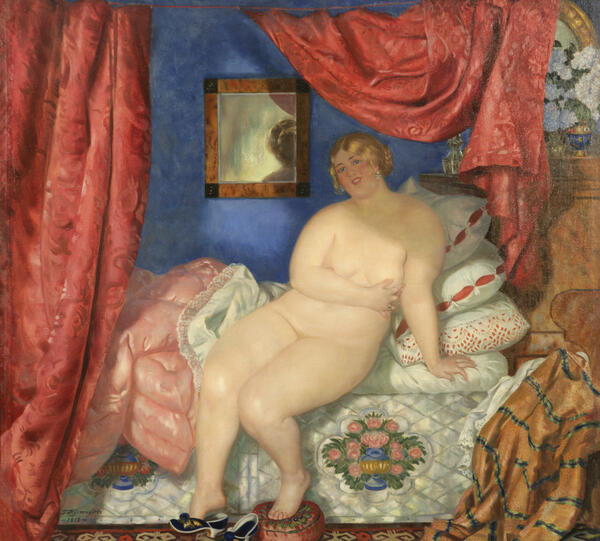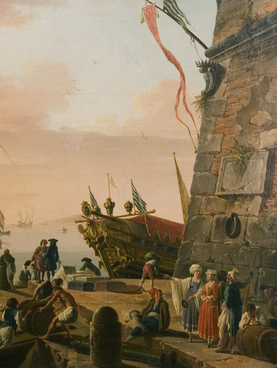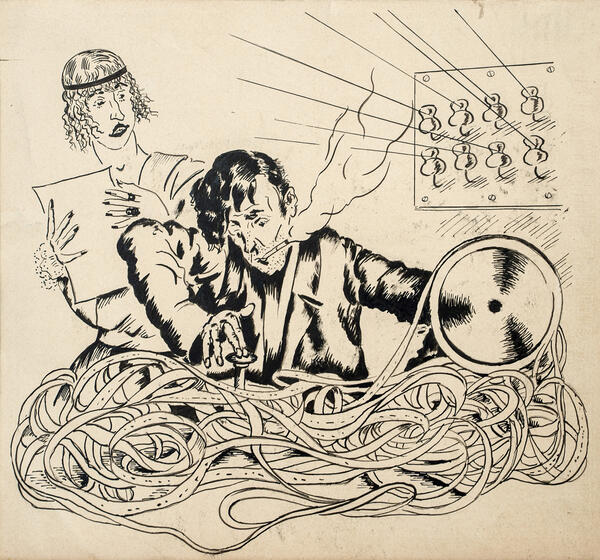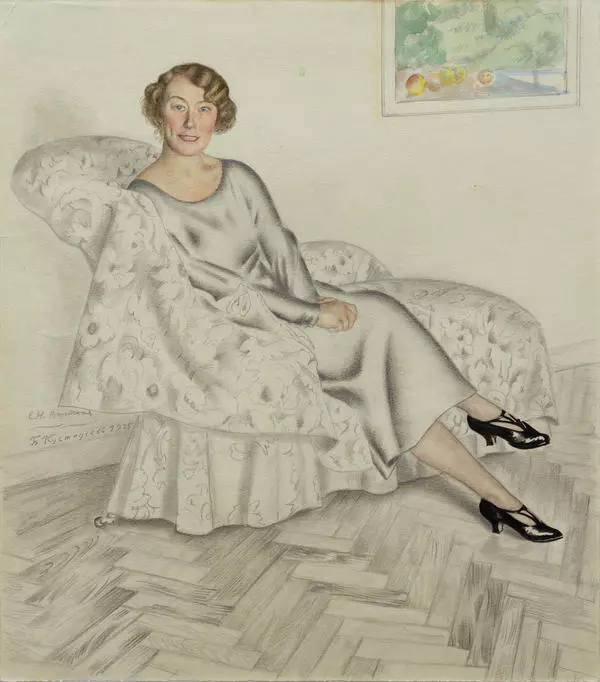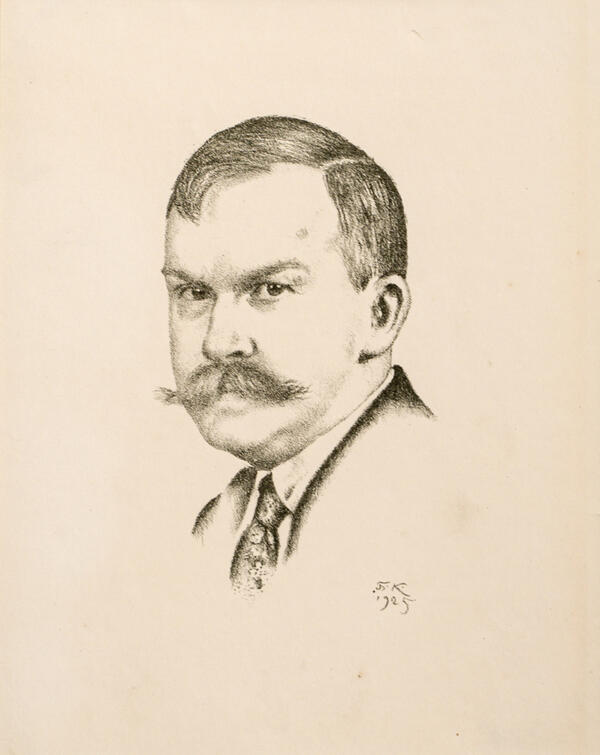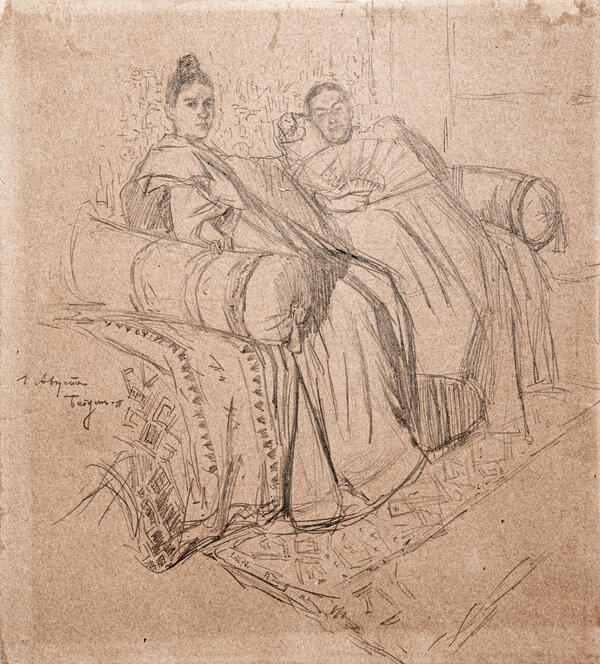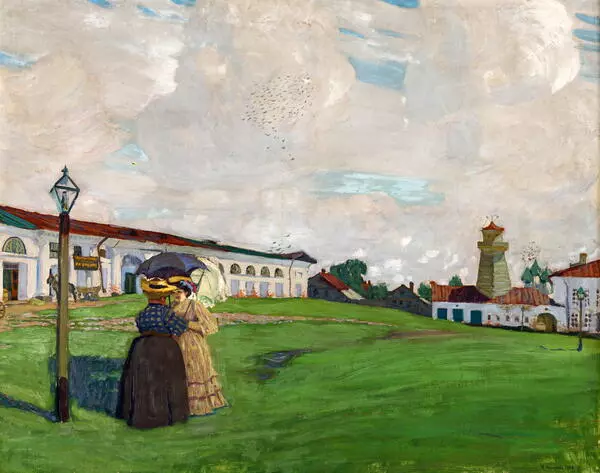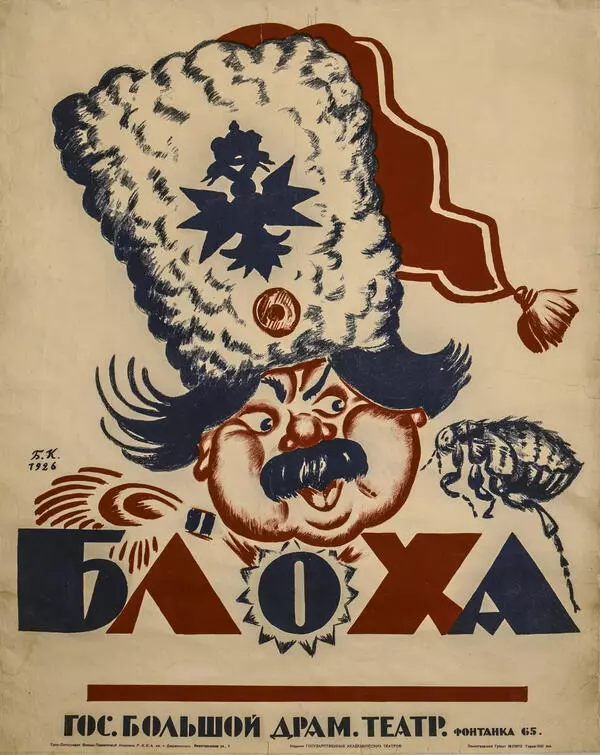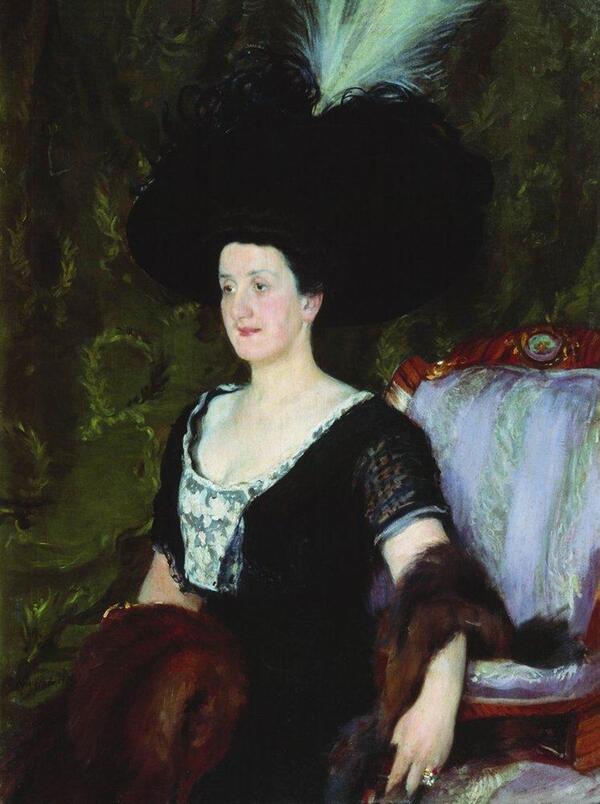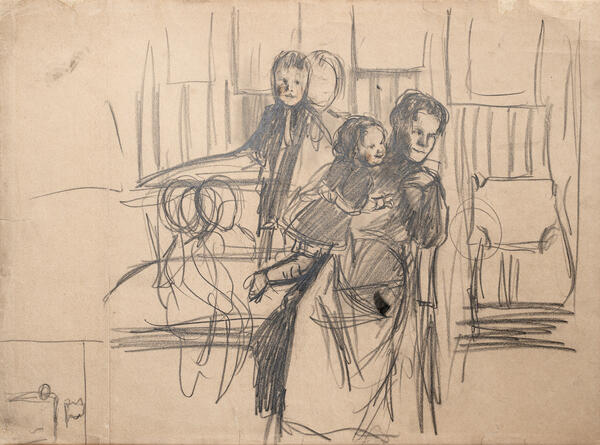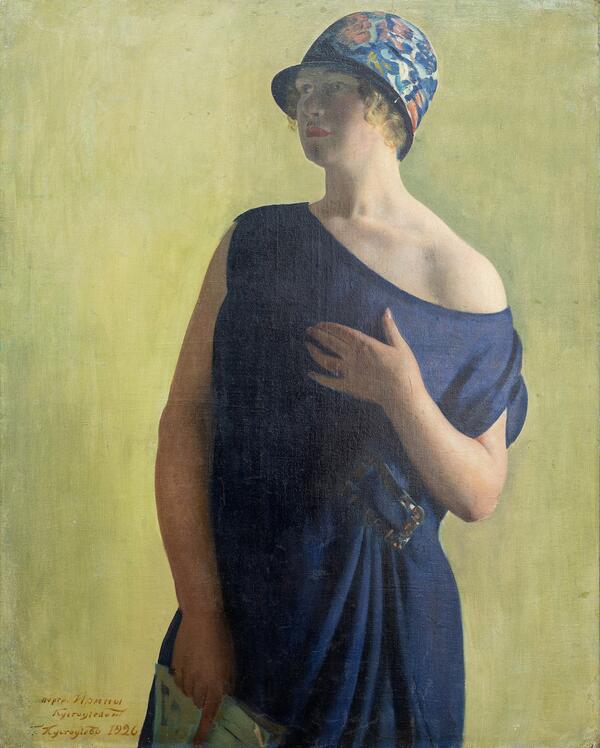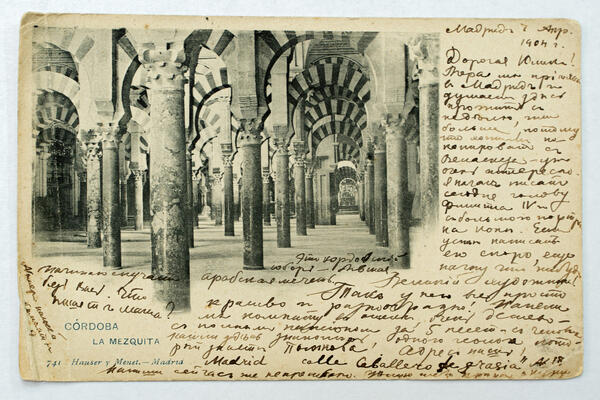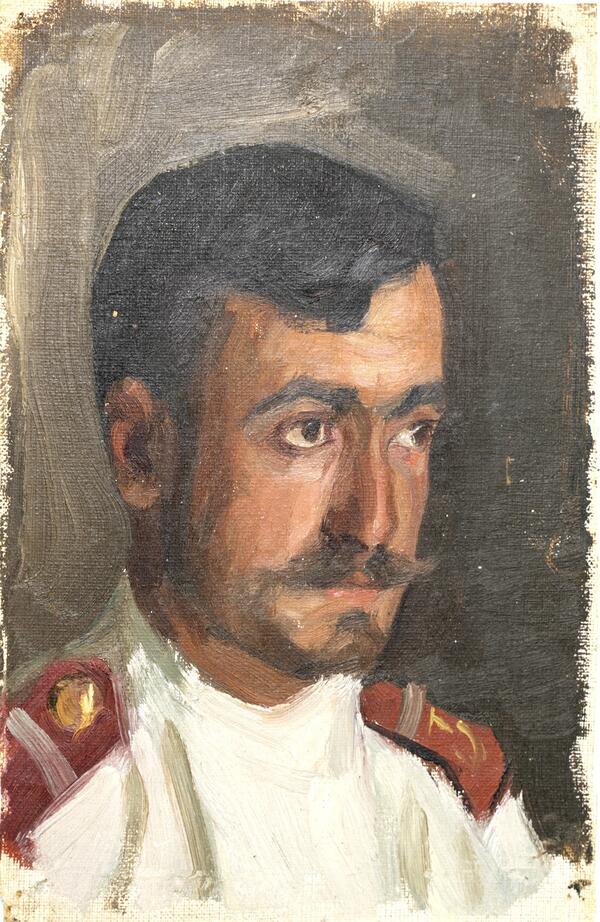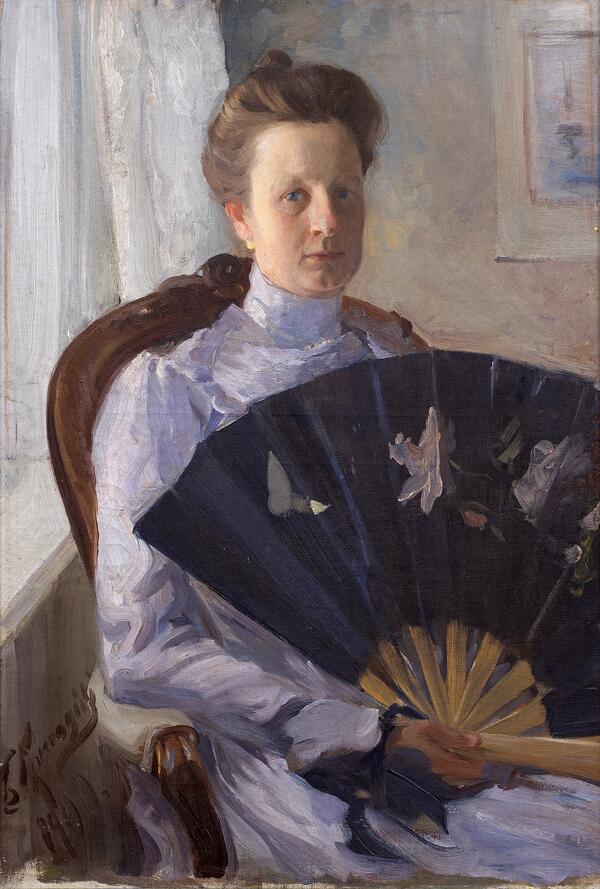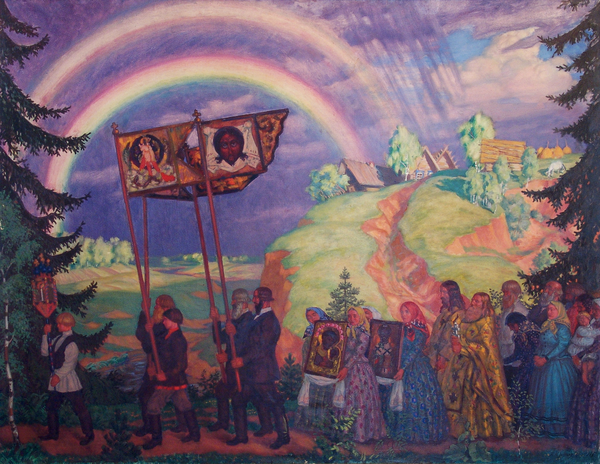‘The Beauty’ was painted by the prominent Russian artist Boris Kustodiev in 1915. He created the image of a naked merchantress on her early morning, surrounded by puffy pillows and blankets, in a typical interior of the time. Faina Shevchenko, 21, one of the leading actresses of the Moscow Art Theatre, was a model for the painting. Her notable admirers included Alexander Blok, Maxim Gorky, Fedor Chaliapin.
Boris Kustodiev often turned to the portrait-painting genre when the hero’s character is revealed through the interior and surrounding objects. At the feet of his heroine, there are slippers. Their deep blue color is combined with shades of walls, vases, and patterns on the blanket. Expensive, richly decorated shoes were considered a good gift at that time. Behind the beauty’s back, there is a mirror. Many artists painted this object in their works to emphasize female beauty. In Boris Kustodiev’s painting, the mirror helps to make the perspective more complicated, create additional depth and space. It reflects the head of the beauty with a delightful braid and the morning light making its way into the room.
The master’s works’ palette is especially good: It is very sunny, bright, life-affirming, even primitive. The color always sets the tone in Kustodiev’s paintings, creating an atmosphere.
Despite the fact that a certain girl posed for the artist, he created a generalized image of a lush-bodied beauty, later becoming a symbol of merchantry as a class. The artist came about the lush shapes of his model extremely delicately, with good humor. In the painting, the beauty is not embarrassed and looks calm, with some curiosity, very satisfied with the impression she produces. Kustodiev considered ‘The Beauty’ a kind of program work and the result of the search for his artistic style. He later produced three more paintings with minor variations in composition. Two of them are in the State Tretyakov Gallery collection in Moscow, and one is in a private collection in Russia.
The Tula Museum of Fine Arts exhibited a variant created in 1918, acquired by the museum from the private collection of the famous Bolshoi Theatre singer Grigory Malikov.
Boris Kustodiev often turned to the portrait-painting genre when the hero’s character is revealed through the interior and surrounding objects. At the feet of his heroine, there are slippers. Their deep blue color is combined with shades of walls, vases, and patterns on the blanket. Expensive, richly decorated shoes were considered a good gift at that time. Behind the beauty’s back, there is a mirror. Many artists painted this object in their works to emphasize female beauty. In Boris Kustodiev’s painting, the mirror helps to make the perspective more complicated, create additional depth and space. It reflects the head of the beauty with a delightful braid and the morning light making its way into the room.
The master’s works’ palette is especially good: It is very sunny, bright, life-affirming, even primitive. The color always sets the tone in Kustodiev’s paintings, creating an atmosphere.
Despite the fact that a certain girl posed for the artist, he created a generalized image of a lush-bodied beauty, later becoming a symbol of merchantry as a class. The artist came about the lush shapes of his model extremely delicately, with good humor. In the painting, the beauty is not embarrassed and looks calm, with some curiosity, very satisfied with the impression she produces. Kustodiev considered ‘The Beauty’ a kind of program work and the result of the search for his artistic style. He later produced three more paintings with minor variations in composition. Two of them are in the State Tretyakov Gallery collection in Moscow, and one is in a private collection in Russia.
The Tula Museum of Fine Arts exhibited a variant created in 1918, acquired by the museum from the private collection of the famous Bolshoi Theatre singer Grigory Malikov.

